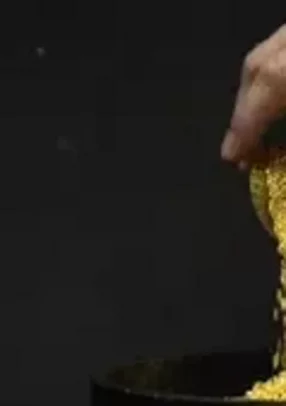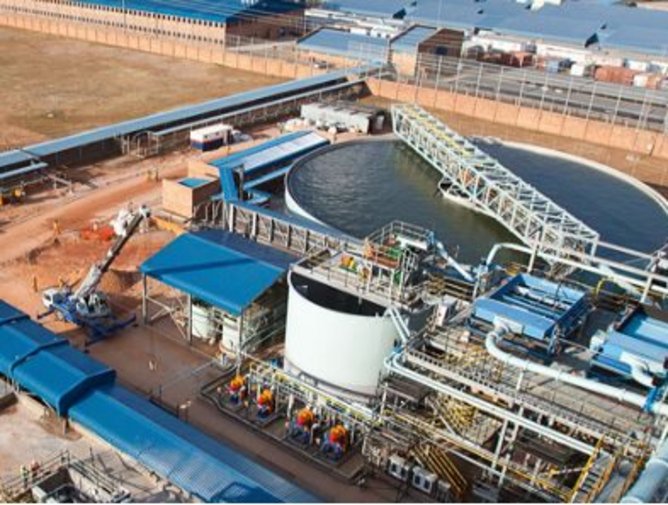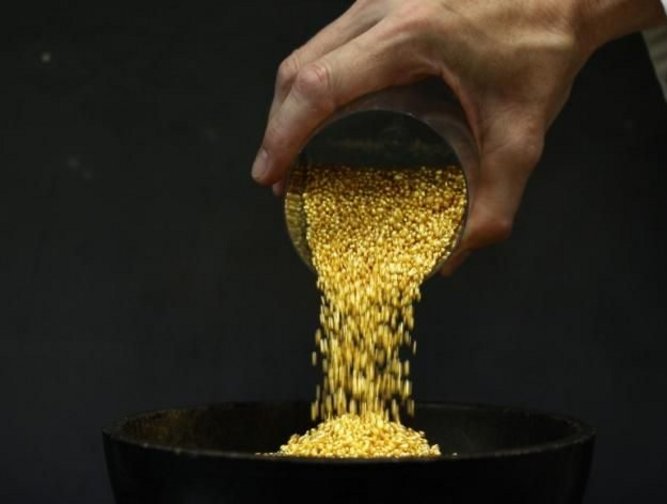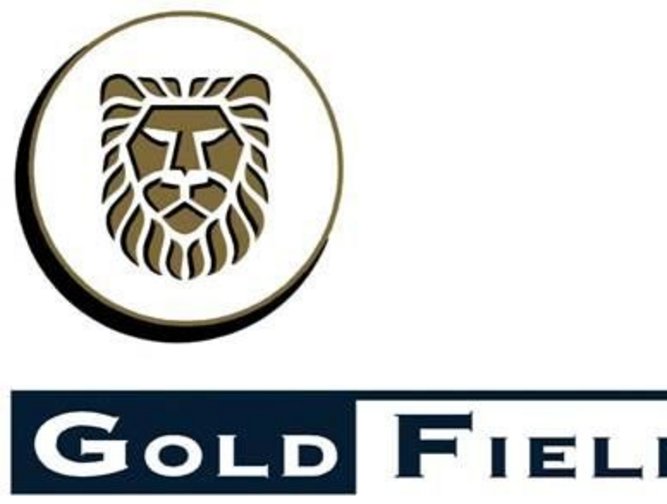
World Leading Gold Producer
Gold Fields Limited, formed in 1887 by Cecil Rhodes and Charles Rudd, is one of the world’s largest unhedged producers of gold with steady state attributable production of approximately four million oz per annum from nine operating mines in South Africa, Ghana, Peru and Australia.Its Peru mine, Cerro Corona, a gold/copper mine, recently began production at an initial rate of approximately 375,000 gold equivalent oz per annum.
“Gold Fields has total attributable ore reserves of 83 million oz and mineral resources of 251 million oz,” says the firm, which is listed on JSE Limited (primary listing), the New York Stock Exchange (NYSE ), NASD AQ Dubai Limited(NASD AQ Dubai), the New Euronext in Brussels (NYX) and the Swiss Exchange (SWX).
CERRO CORONA
The Cerro Corona Development Project, which Gold Fields Limited, through its subsidiary, Gold Fields Corona BVI, bought in 2003, is situated in the highest part of the Western Cordillera of the Andes in northern Peru, approximately 600 km north-northeast of Lima.
The project involves the production of gold and copper by conventional open pit mining extraction of a copper/gold flotation concentrate, which will then be shipped to smelters in Japan, Korea and Europe.
“The Cerro Corona Cu-Au deposit is a Porphyry-style mineralisation hosted by a 600 metre diameter sub-vertical cylindrical-shaped diorite porphyry emplaced in mid-Cretaceous limestone, marls and siliclastic rocks,” says Gold Fields.
It has 176 permanent employees, 171 temporary employees and 456 contractors (as of February 2009).
“Commissioned late last year, Cerro Corona is expected to produce 375,000oz/y of gold equivalent at a cash cost of$270/oz,” adds the firm. “Once at full output, the mine is expected to bump Gold Fields’ group output to 4.0 million oz/y.”
Following Gold Fields’ sale of the Choco 10 mine in Venezuela to Russian company Rusoro Mining in late 2007, Cerro Corona became the South African corporation’s only producing asset in Latin America.
OVERVIEW
The capital expenditure of $550 million was completed at Cerro Corona in the December quarter (F2008). The mine outperformed guidance substantially with respect to the physical production of gold and copper.
Gold Fields says: “Total cumulative capital expenditure through F2008 reached $501 million, which is $80 million higher than the revised project value of $421 million.
Project forecast cost at completion is now projected to peak at approximately $550 million. Projected operational costs per ounce for the F2009 is $270 per equivalent ounce.”
The ramp-up of the mine to full production was exceptional. The mining fleet is performing well and the plant finished the quarter strongly.
“Complications in the generation and placement of construction materials for the Tailings Management Facility (TMF) embankment continued to affect the project timelines during the first half of the year. Most of these were overcome when new sources of clay were opened up during late 2007. However, rain affected the rate of placement, further impacting on construction timelines,” the company adds.
“The TMF embankment elevation work was completed during the fourth quarter and, as of August, 500,000 cubic metres of water had been captured. This is sufficient to take the mine through the dry season.
“Mining activities focused on generating construction material for the various site structures, in particular the TMF.”
Poor rock quality and inadequate material delivery rates have hampered building the TMF and several contractors responsible for installing the concentrator have underperformed, Gold Fields says.
“Mechanical construction activities were concluded in late April,” the company explains. “Precommissioning activities commenced in June and commissioning was completed by the end of August. Project operational transition teams with formal plant operation and commissioning procedures are in place for all aspects of Cerro Corona on a go forward basis.
“Of the approximately 3,000 people working on site throughout most of F2008, 825 came from local communities,” it continues. “Over 50 local community contractors and suppliers continued working for the project. Community stakeholder engagement continued at high levels throughout the year and community relationships were generally positive and stable, with no work stoppages due to community concerns.”
COPPER PRICE
When the copper price was high and there were good gold credits to be had, a copper/gold porphyry was a sought-after mix. But with the collapse of the copper price and the rise of the gold price, these days copper is seen as anything but attractive. The timing of the collapse of copper couldn’t be worse for Gold Fields’, especially as its new Cerro Corona copper/gold project in Peru, was completed as recently as December 2008, at a capital cost of $550 million.
“It came on stream just when the copper price fell,” says Glenn Baldwin, Gold Fields Executive Vice President, Head of International Operations.
“We’ve done all we can to manage our tailings dam operations and smelting processes well, but the price of copper is out of our hands.”
Despite the price though, the metallurgical recoveries that Gold Fields expected when it did the feasibility study are being achieved: “Production of 61,500 equivalent ounces was recorded during the December quarter, compared with 12,400 equivalent ounces in the September quarter,” says Gold Fields’ Q2 F2009 results.
“The September quarter included one month’s production compared with a full quarter’s production in the December quarter. During the December quarter concentrate with payable content of 32,100 ounces of gold was sold at an average gold price of $817 per ounce and 6,500 tons of copper at an average copper price of $2,113 per ton, net of treatment and refining charges.”
GRIM REALITY
Unfortunately for Gold Fields, more copper will be mined in the early years of the mining of the copper/gold porphyry at Cerro Corona than will be mined in its later years. This is a huge blow, especially as gold prices continue to rise, while copper falls. Nothing can be done to reverse this because, being a porphyry, Cerro Corona has a significant clay content and the opportunity to change from a copper to a gold concentrate at a time of high gold prices and low copper prices cannot happen. There are however, opportunities to increase the amount of production at the plant, increase volumes and cash flow.
“Cerro Corona remains a robust project and will make a significant contribution to the future of Gold Fields,” Baldwin tells Exec Digital.
NOT PUT OFF
The complexities of mining copper/gold deposits have not put Baldwin, or indeed Gold Fields, off the pursuit of copper/gold hybrids. Gold Fields is still targeting copper/gold porphyry deposits.
Gold Fields has another copper/gold porphyry in Kyrgyzstan – the Talas project – which is a very substantial copper/gold deposit.
“It is worth remembering the longer-term; copper can’t stay at $1.40 forever. There will be a recovery at some point,” says Baldwin.
Gold Fields, it seems, uses a conservative approach to its copper/gold ventures, and, if projects are feasible at what are seen as conservative copper prices, projects can be duly risk-adjusted.
“We are seeing evidence of a number of more copper/gold porphyry deposits in Peru, where we are well-established, and also in Australia and Europe,” says the firm.
“We’re not scared of copper/gold, but we are well aware of the all the complexities.”
LONG TERM VIEW
Gold Fields takes a long term view to business. By long term it means, five to 20 years, not a three-month view or a six-month view. It remains a gold company, but, that does not prevent it from looking at deposits in which gold and copper exist together.
“Predominantly, we are a gold company, and that’s our strategy, but we are not averse to having one or two other Cerro Corona’s in the Gold Fields portfolio,” Baldwin says. “A standalone copper deposit would probably be a step too far though.”
CEO Nick Holland added in a webcast speech at the BMO Capital Markets 2009 Global Metals and Mining Conference: “We are looking to acquire a property which could turn into another Cerro Corona.”
EXPLORATION TEAM
Gold Fields’ exploration team, which operates on five continents, is currently spending $100 million a year on exploration. However, Gold Fields will not allow itself to be blinded by opportunity.
Its first objective is to run optimally with what it has, ensuring it is working well. After all, it has just spent big on Cerro Corona and the aim is to gain returns on that asset before expanding further.
“We have done all of the hard work and it’s now a question of harvesting,” Baldwin says. But, simultaneously, the company will not ignore opportunities and you can rest assured if the right one comes along Gold Fields will be extremely interested.
THE FUTURE
South Africa’s gold industry, long seen as a stalwart in global production of the precious metal, can, in 2009, look forward to a year of stabilization after a string of unfortunate events that marked 2008.
The first half of F2009, though, was extremely challenging for Gold Fields. During the period it has had to make a number of challenging decisions regarding the rehabilitation of its South African mines and other international growth projects.
But, it isn’t all bad news, and Gold Fields has taken safety to a new level: “While we consider this as work-in-progress, we have already seen significant improvements on all safety metrics,” says Holland. “Particularly significant is the decline in the fatal injuries which, to December, stands at eight compared with the total of 47 for F2008. Our objective is to achieve a significant decline in serious injuries and to eliminate all fatal injuries on our mines.”
The Christmas break obviously had an impact on the South Africa operations, and the decline in the copper price, which negatively impacted the conversion of copper into gold equivalent ounces at Cerro Corona, has been another headache.
“As a result of the lower copper price and its impact on the conversion of Cerro Corona’s copper into gold equivalent ounces, total gold production for the Group is expected to stabilise,” says Holland.
“The expected shortfall of 25,000 ounces against our targeted run rate of one million ounces is entirely attributable to the conversion of Cerro Corona’s copper into gold equivalent ounces at the lower copper price. However, the mine is expected to achieve its design capacity in actual gold and copper production.
“With our major growth projects in Ghana and Peru completed, capital expenditure is expected to decline significantly. Combined with the expected increase in production and our ongoing efforts to reduce our cash costs and notional cash expenditure, this will enable us to benefit more from the higher gold price and move the company to a cash positive position.”
He adds: “Electricity supply in South Africa, which constrained our operating performance in F2008, has stabilised. More importantly, Gold Fields has ameliorated the impact of power rationing by implementing several energy saving projects. In light of the current credit crisis, Gold Fields’ balance sheet remains robust with manageable debt levels and adequate liquidity.
“For the remainder of F2009 and through F2010, our main priority is to further improve our safety performance and to increase production by optimising our existing mines,” says Holland.
TARGETS
Gold Fields has a number of exploration targets in Australia and would like to create another mine in the Australasia region. It’s target is to have mines in Australasia that are producing a million ounces a year in three to four years, or at least to have that level of possibility in development.
Gold Fields is also planning far higher production of physicals, internationally, and is reviewing all of its assets. “Gold Fields continually reviews all aspects of its operations,” says Baldwin. “For one, we plan to increase gold production at Cerro Corona.
“The next quarter will be one of consolidation of each mine,” he adds, stating that Gold Fields’ international operations have positioned themselves well to take advantage of the higher gold price.
Gold Fields’ international operations have had a full quarter of Cerro Corona production, along with solid performances from Australia and Damang, to deliver 405,000 oz of gold at a total cash cost of $507/oz.
BEYOND CERRO CORONA
In the same quarter that the Cerro Corona project was completed, the Tarkwa carbon-in-leach (CIL) expansion project was mechanically completed, and the St Ives Belleisle and Cave Rocks underground projects achieved full production.
This puts Gold Fields in an extremely strong position internationally and the Gold Fields international group is now planning for higher production as a result of the expanded CIL plant at Tarkwa, in Ghana, Cave Rocks, at St Ives, and mining efficiencies at Agnew, which will result in lower costs an ounce across the portfolio.
The next main project for international operations is the Athena underground project at St Ives. Gold Fields aims to complete a conceptual study on the Athena prospect soon.
A BRIGHT FUTURE?
Overall, mining productivities within the Gold Fields international group is improving, according to Baldwin, and this is important going forward, as the company needs to increase the mining rate to ensure that reserves are available for processing.
Gold Fields, it seems, is intent on achieving outstanding returns for investors. With motivated employees committed to optimising existing operations and aggressively pursuing and developing additional world-class deposits, promoting mutually beneficial relationships and applying best practice technology. Our vision is to be a leading, globally diversified, precious metals producer through the responsible, sustainable and innovative development of quality assets,” says the firm.
BIOX® TECHNOLOGY
Gold Fields also has a BIOX® division, a technology business, which owns the proprietary and patented technology known as the BIOX® process, for the pre-treatment of refractory ores and concentrates ahead of conventional cyanide leach for gold recovery.
The BIOX® process has many advantages over conventional refractory processes such as roasting, pressure oxidation and nitric acid leaching. These include improved rates of gold recovery, lower capital cost, low operating cost, low levels of skills required for operation, and the added benefit of being environmentally-friendly.
“The BIOX® process, which pre-treats refractory sulphide gold ores containing pyrite, arsenopyrite and pyrrhotite, was developed to increase gold recovery rates during the metallurgical extraction process,” says Gold Fields.
“The gold in these sulphide ores is encapsulated in sulphide minerals which prevent the gold from being leached by cyanide.”
Rights to the process are currently held by Biomin Technologies SA, a subsidiary of Gold Fields Limited. However, the initial research and development into the process was conducted by Gencor Process Research.
“The BIOX® Process, for the treatment of refractory gold ores and concentrates, has been commercially in operation for the past 20 years,” adds Gold Fields.
The BIOX® plant at the Fairview mine in Barberton, South Africa, also the initial pilot plant, has played a vital role in the ongoing development of the process.
It was originally designed to treat 10 t/day but over the years it has been expanded numerous times to the current capacity of 62 t/day of concentrate.
A total of 11 commercial BIOX® plants have been commissioned over the last 20 years. Eight of these plants are currently still in operation.





